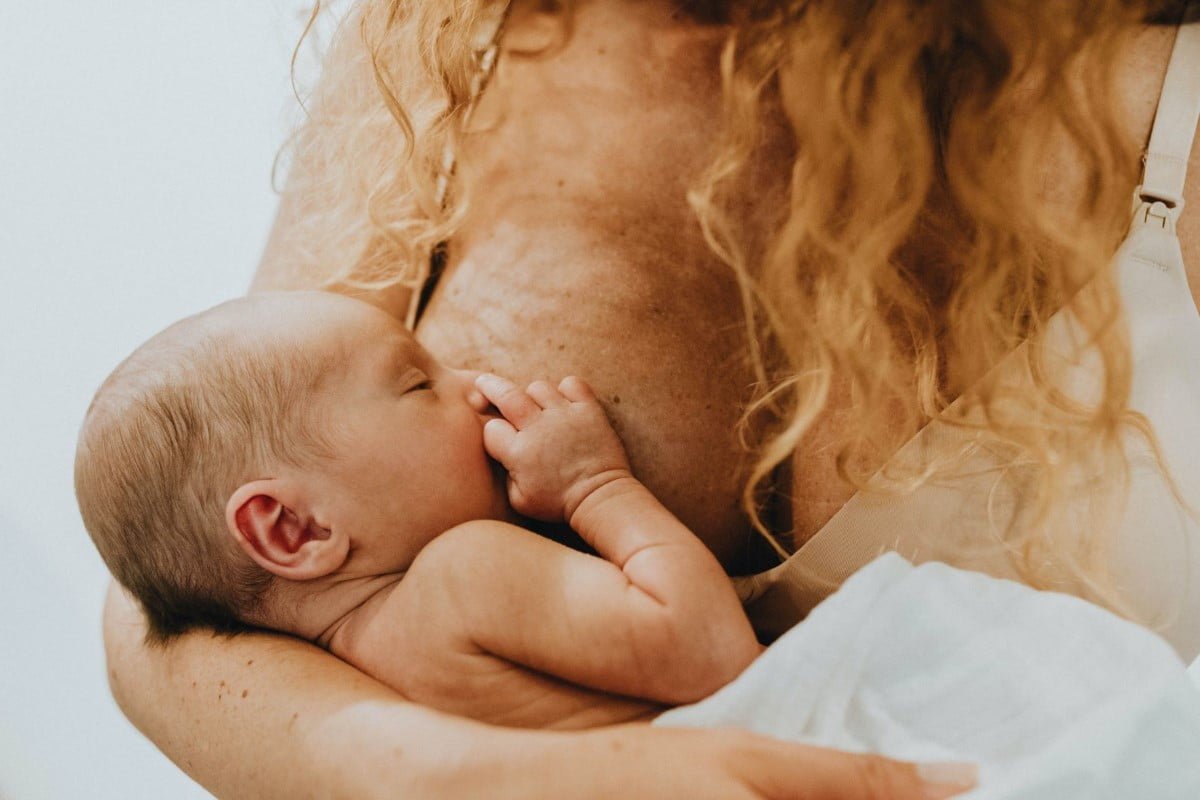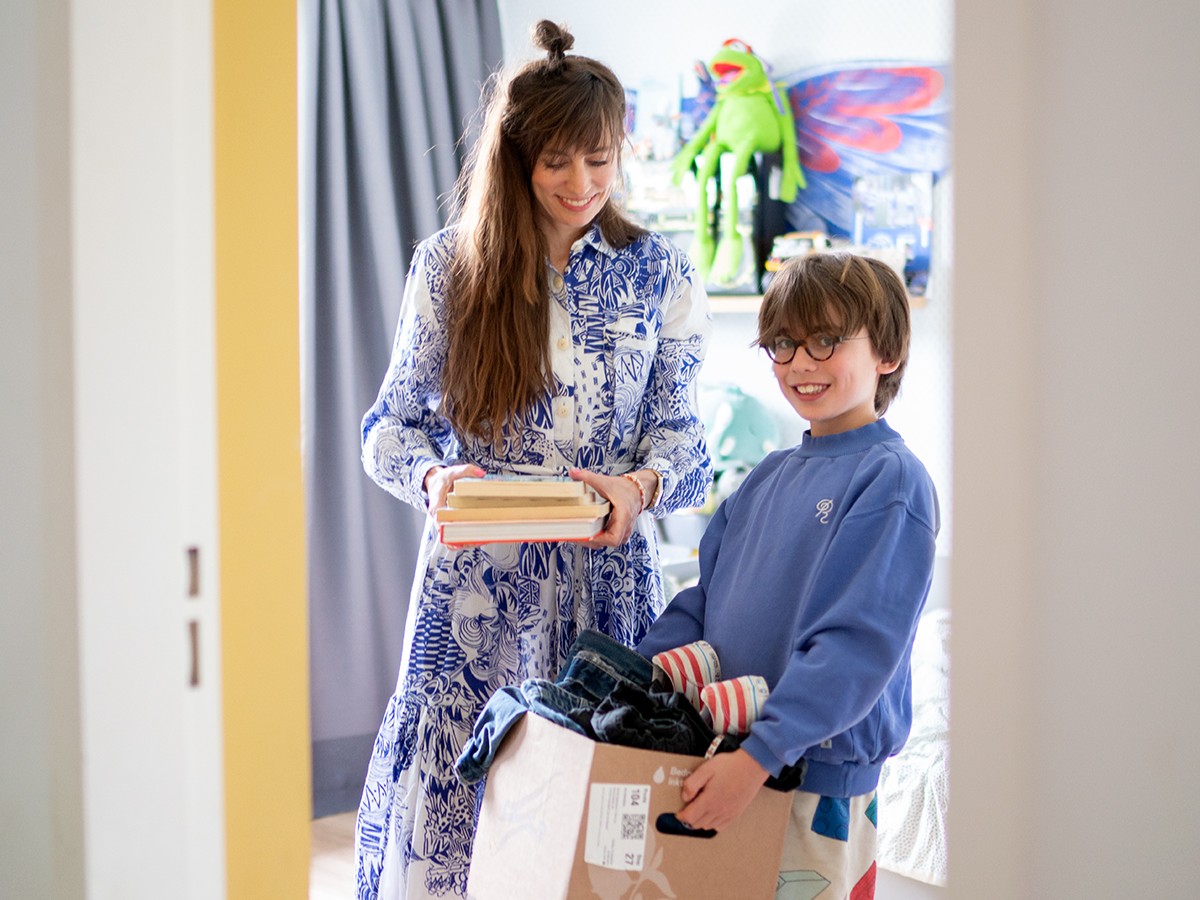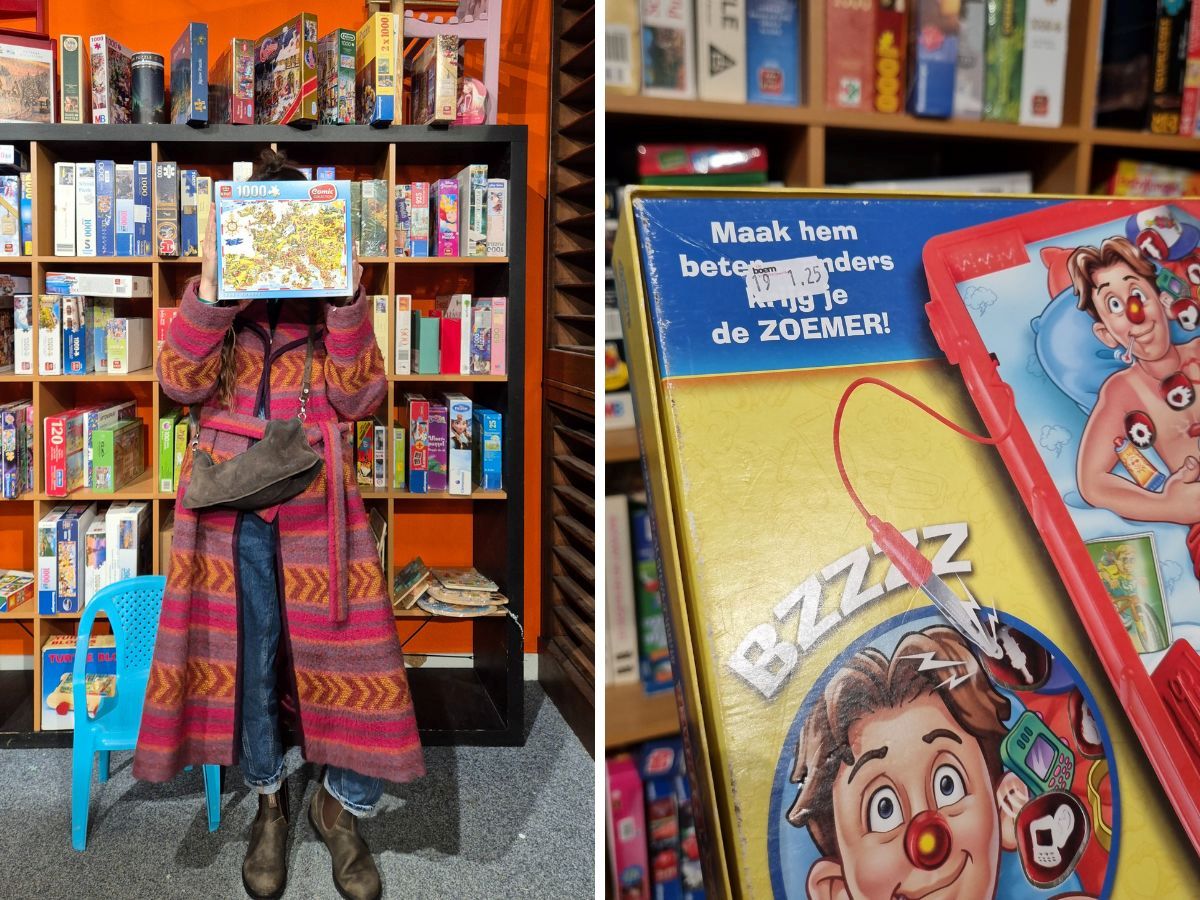Mothers-to-be naturally want the best for their baby. Breastfeeding is the most natural and healthy food. In addition, it is sustainable and saves money. Unfortunately, breastfeeding is not always easy. Especially in the beginning, a lot of perseverance is often required. Kirsten knows all about this. She breastfed her two daughters for a total of more than two years (and is still at it). In this article, she shares tips and enduring essentials for breastfeeding.
Breastfeeding: tips and supplies
A mother cuddles delightfully with her baby, who meanwhile drinks leisurely at her breast. This was the ideal picture I always had of breastfeeding. Unfortunately, with my first child, things looked very different in reality: it hurt, was difficult and I had too little milk. I was also totally unprepared for it, as I thought breastfeeding was something natural that came naturally. When I was pregnant again, I decided: there must be another way. I read some books and talked to other mothers. And miraculously: this time it went so much easier and I was able to enjoy it myself. In this article I share the tips I wish I had known with my first child. You will also read about what you need for breastfeeding and how to figure it out as sustainably as possible.
Breastfeeding: every day is beautiful
There are many advantages to breastfeeding: you always have your milk at hand and it always has the right temperature and composition. Breastfeeding is free, sustainable and it is the most natural and healthy food for your baby. The WHO and UNICEF even recommend fully breastfeeding your baby for six months and at least two years in combination with solid food. Even if you breastfeed for much shorter periods: every day is nice. For instance, in the first few days after your baby is born, you will produce what is known as colostrum. Colostrum is packed with antibodies to protect your baby. But breastfeeding also has benefits for the mother: the hormones released help the uterus recover. And if you breastfeed, you will lose the pregnancy pounds more easily.
Six tips for breastfeeding
Because breastfeeding is something natural, many women think: ‘I'll just do this’. Unfortunately, in practice it is often disappointing and requires a lot of perseverance, especially in the beginning. With the tips below, you will be better prepared so that you and your baby can fully enjoy this special, natural and sustainable way of feeding.
Fast docking and paying attention to signals
Whenever possible, try to give your baby a little drink as soon as possible after birth. The recommendation is within an hour of birth. If this doesn't work, don't worry: there are plenty of mothers who couldn't put their baby on right away, but were able to breastfeed successfully afterwards. It is especially important to let your baby drink as much as possible in the first days after birth to get production going. You do this by paying close attention to your baby's hunger signals. If your baby cries of hunger, this is actually a distress signal. A crying baby finds it harder to drink from the breast. It is therefore better to latch your baby on at the first sign of hunger. hunger signals such as:
- Your baby becomes restless and moves its arms and legs.
- Your baby turns its head back and forth.
- Your baby opens his mouth and possibly sticks out his tongue.
- Your baby makes sucking movements.
- Your baby will start sucking his hands.
When you feed your baby at these signals, he is not yet as frustrated or tired from crying and feeding will be easier. (Source: book ‘Inuitives Stillen’)
Try delaying the dummy
Try to give your baby a dummy only when breastfeeding is going well. This usually takes a few weeks. When a baby sucks on a dummy a lot, he gets tired and sucks less effectively at the breast. It can also be confusing because sucking on a dummy is different, compared to sucking on the breast. If you do give a dummy, do so as briefly as possible and only after your baby has drunk enough. I myself gave my second child a dummy after five weeks to get her to sleep, because all she wanted to do in the evening and at night was to suck on the breast and I was completely exhausted. After a few days, she managed to fall asleep on her own again and we no longer needed the dummy.
Timing of the first bottle
If you give a bottle too early, this is also confusing. Try not to do this for the first six weeks. After that, you might want to pump once or twice a week and give this in a bottle. If you don't do this, later on your baby may not want to drink from a bottle at all. Does your baby refuse the bottle? Have someone else give the bottle and leave the room yourself. Find fine products for pumping later in this article.
Teaching baby to latch on properly
Let your maternity assistant or a lactation consultant tell you how to latch your baby properly. Doing this right from the start can save you a lot of misery and sore nipples. This is nicer for you and can also prevent you from having to use a nipple cup. Using a nipple cap will make you produce a little less milk.
Accept all help
This tip is less practical, but no less important: Take all the help you can get. Breastfeeding takes a lot of time and energy in the beginning. It is quite normal if for the first few weeks, you are feeding eight to 12 times every 24 hours. So it makes sense that you can't do everything on your own. You have only just given birth and are feeding a baby on your own (or at least to a large extent). If you have someone to help you with housework, cooking food, babysitting or whatever: accept that help without guilt. When you are rested and relaxed yourself, it will also benefit your milk production.
Should things still not go so well with breastfeeding, get help in time. This can be done at a lactation specialist or at breastfeeding organisation La Leche Leage.
Personal breastfeeding story
‘With me, breastfeeding also struggled to take off after the birth of my son. I had almost given up. There was a fine nurse at the hospital who helped me on my way. My son was given baby food for the first few days, while we kept breastfeeding him. We also tried to get production going with a pump. And it worked! Within three days, my milk production was up and I was able to feed my son completely with breast milk.’
Saskia from thegreenlist.nl
Breastfeeding well prepared
With proper preparation, you and your baby can enjoy this fine, healthy and sustainable way of feeding. In the beginning, it might be heavier than artificial feeding, especially because you have to do everything on your own. But once breastfeeding is underway after a few weeks or months, these moments of you and your baby are very special. Moreover, breastfeeding is very practical and saves you a lot of money. However, there are a few breastfeeding supplies that are handy to buy in advance. Do you want to make this as sustainable as possible? Then read on quickly.

With a few handy tricks, breastfeeding goes a lot easier.
Durable supplies for breastfeeding
Breastfeeding is more sustainable than bottle feeding: you don't need powdered milk and also no, or far fewer, bottles. This is not only more sustainable, but also saves a lot of money. Still, there are a few supplies that are handy to have around the house if you are breastfeeding. And you guessed it, you can do that more sustainably too.
- When you go back to work, or are away from your baby for longer periods of time for some other reason, it is convenient to pump. You can easily rent, borrow or buy a pump second-hand. Do you think this is dirty? Then remember that you can easily clean and sterilise all the parts. By the way, did you know that you can also pump breast milk by hand? I didn't find this out until my second breastfeeding, but when I got the engineering once mastered it went easily and quickly.
Personal breastfeeding story
‘Even when breastfeeding was well underway, I still used our rented pump daily. The pump helped us tremendously in reducing the broken nights. Every evening at 10pm I would pump, then go to sleep. If my son woke up for feedings at 01.00, my husband could pick up this feed with the pumped milk. At 04.00, I would pick up the next feed again. This meant that my husband could sleep from 01.00 to 07.00 every night and I made continuous nights from 22.00 to 04.00 (and often fell asleep after that).’
Saskia from thegreenlist.nl
- It is better to buy new bottles, though, so that they comply with the latest guidelines. Glass bottles are easier to clean and therefore last longer (plastic bottles get a greasy haze after a while and do not come off well). If you are breastfeeding, it is advisable to choose a teat that resembles the breast so that the baby accepts it more easily and also goes back to the breast more easily. My youngest daughter preferred the breast and was very fussy: we tried different teats and the one from Lansinoh accepted them best.
- If you have pumped breast milk and want to store it for a longer period of time, you can do so in the freezer. A sustainable budget tip: you can store breast milk in recycled glass jars. Just write the date and quantity on them. Do not fill the jar completely, but leave a few centimetres free at the top. Don't have much space in the freezer? Then instead of disposable bags, you can opt for reusable silicone bags, such as these Stasher bags.
Personal breastfeeding story
‘When our son was born, I was not yet concerned with sustainability. And yet I was given a sustainable breastfeeding tip by my maternity nurse. I stored breast milk in the freezer in silicone ice cube moulds (bpa-free). That way, I could easily thaw frozen breast milk narrowly and didn't have to waste milk.’
Saskia from thegreenlist.nl
- A feeding pillow is useful to support you and your baby while breastfeeding. Before you decide to buy one new, ask friends or look on Marktplaats or Facebook to see if you can find a second-hand one. Most feeding pillows have a filling of synthetic material (e.g. polyester balls), but fortunately there are more and more feeding pillows on the market made of natural material like this one Feeding pillow from Lotties: a cover made of certified organic cotton filled with maize fleece. By the way, a feeding pillow is also great for supporting your belly while sleeping when you are pregnant.
- Finally, sucking pads are useful to prevent your shirt from being full of milk stains. There are fine washable nursing pads on sale made of natural materials such as wool, silk, bamboo or cotton. Additional advantage: with these compresses, you have less risk of infection than with disposable plastic compresses. Find more tips for sustainable baby gear here.


When breastfeeding, healthy food is extra important. If you are breastfeeding, you will also need bottles because it is important to get your baby used to the bottle. You can also buy these more sustainably.
Breastfeeding: good preparation is half the battle
Are you also eager to breastfeed? The most important tip I can give you: prepare well and relax. Even if it doesn't work right away, there are still plenty of chances and ways to get it going. Read a good book on breastfeeding and talk to other breastfeeding mothers. There are also (online) courses to best prepare you for the breastfeeding adventure. If you know what to expect and are aware that it will take a lot of time and energy in the beginning, it will be easier to keep going. Should it not work out despite all the tips, preparation and help: don't hesitate to stop. Breastfeeding is simply not possible in some situations. The most important thing for your baby is that you are doing well as a mother, whether that is with breastfeeding, bottle-feeding or a combination of the two.
More sustainable tips from thegreenlist.nl
- Also see: the great sustainable peanut butter test.
- Also see: tips for building a sustainable children's wardrobe.
- Also see: Zero waste menstruation, what are the options?
Sources: Breastfeeding Council, WHO, 24baby.nl, lalecheleaugue.nl, lalecheleaugue.nl, lalecheleaugue.nl, lalecheleaugue.nl. Photo credits: Helena Jankovičová Kováčová (Pexels), Wendy Wel (Pexels), Mart Production (Pexels), Taryn Elliott (Pexels).












